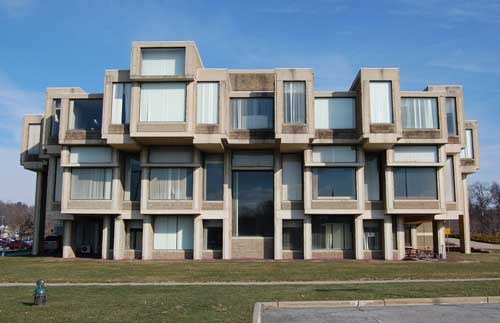maestro
Senior Member
Except that in that telling, it still treats "heritage" patronizingly--more as a plastic-bubble outside annoyance than as part of a broader planning symbiosis. And by portraying it in excessively no-enhancement/modernization "obstructionist" terms, it's a little too reminiscent of homeowners/agents grumbling about how heritage designations mean you can't replace knob-and-tube wiring or whatnot. Which also means, for it to "work" for these parties in question, you'd actually have to not broaden, but euphemistically *rationalize away" Toronto's present-day listable/designatable heritage stock--sort of like a heritage Common Sense Revolution. And that--in effect, your kind of "realism"--is something I reckon the heritage community is likelier to fight than welcome.
Remember, the big-portfolio mentalities we're dealing with are not terribly unlike the mentalities in this article http://torontolife.com/city/mcmansion-wars-neighbour-versus-neighbourh-forest-hill/
in this particular paragraph
The teardown craze in Forest Hill began roughly around the time that North and South Rosedale became Heritage Conservation Districts. These designations came about due to protectionist residents committed to defending the neighbourhood’s “clearly discernible character as a picturesque suburb with varied architectural styles” (as stated in the group’s heritage guidelines). It’s now next to impossible to build a new house in Rosedale, unless you’re willing to spend tens of thousands of dollars at the OMB. Real estate agents and builders actively discourage their clients from buying there. As a result, anyone looking to build a new home in a wealthy neighbourhood close to downtown heads west. Over the past decade, 171 new homes have been built in Forest Hill; in Rosedale, 38. One high-end Toronto builder tells me Rosedale’s historical designations have backfired, particularly in North Rosedale. “The guidelines aren’t creating better streetscapes. They’re saving a lot of houses that aren’t worth saving.”
Is *that* what you'd sympathize with?
And I'm quite certain that the original architects of a whole slew of even older, and designated, and preserved old buildings "knew" that their designs, too, would be "short-lived"; or at least, inevitably consumed by the inevitable ebb and flow of organic urbanity--it would've boggled their minds that "ordinary" commercial frontages along Yonge or Queen or Spadina or whatnot would one day be cherished rally points. Even Edwardian-era futurists could have foreseen, by 2015, something like Old City Hall "inevitably" falling on behalf of a skybridged skyscraper metropolis full of airships and what have you. The comprehensive "preservation mentality" as we know it is only half a century old; and re the original architect's vision, remember that Parkin planned to remake the *entire* Simpson block and (despite whatever claims to OCH being a conscious part of NCH/NPS's urban setting a la CCN relative to Commerce Court) was pretty much resigned to "progress" and whatever fate befell Old City Hall. Like you, the Parkin braintrust would've claimed to be "realistic", even though they were against the grain of the nascent "preservationist mentality". But that's no reason to spite the existing tower as a fait accomplii, much less tut-tut the heritage crowd with "hey, this is what you were rallying against half a century ago, why are you rallying on its behalf now?"
And besides, note that I was purposely allowing for *more* flexibility than the proverbial "hands off designation", even suggesting that the makeover might have been better off if it went *further* in obliterating the existing design and aspect. However, I'm just warning you: given precedent, *if* a heritage listing designation were pursued here presently, in 2015 as opposed to 1975 or 1985 (and factoring out the present scheme underway), if it were up to preservation staff and the heritage community it'd likely pass with flying colours. Notwithstanding your "I just don't see the history or architecture" claim, which betrays either ignorance or hostility as to where the state of the heritage-recognition art is. (And maybe--just as with the Rosedale HCDs--that's what scares the real estate/development vested interests: they know that once the designation-process gears start turning, they *really* need to get the maestro-esque anti-designation lobbyists in place, otherwise they haven't a chance in blazes. Which may even be a reason why the Simpson's scheme came about through a kind of municipal-bureaucratic subterfuge, and we didn't really get a chance to "witness" the actual scheme in full rendering until it was too late.)
In that case, might as well list/designate nothing recent-past other than a select few "obvious landmarks" a la New City Hall--sort of like the post-WWII version of Le Corbusier's "selectivity" (Hey! There's Place Vendome!) in his plans for Paris.
Maestro, you sound like the kind of character who, in accompanying someone pilgrimaging for intact Midcentury Whatever (Don Mills-style housing subdivisions et al), would grumble about how this is all a waste of time because it's all obsolete junk that's falling apart and that clinging to it is like clinging to dial-up or Windows 95. No, you're not "exactly like me"; and if you find any of that water torture by your "realistic" standards, that's your problem...
No where did I say this tower isn't of value. It's one of earliest modern office towers developed. However, I understand its significance is more historical than architectural. The cladding is end of life. It can't be repaired or restored. It needs to be replaced. Enforcing developers to copy the original feels a little extreme. If that makes me a troglodyte than I'll be the best troglodyte I can be.
Now, I really don't see your uncompromising stance as progressive in pushing heritage forward. That unreasonable position by preservationists is likely why heritage was brushed aside for so long. You can't ignore the business side of things. This isn't London where strict heritage laws are also complimented by $200 a square foot lease rates.
You seem to a hard time with this. A prewar masonry building can be repaired and restored for hundreds if not a thousand. A limestone facade can last hundreds of years. Precast, at best, is 50 years. Acrylic stucco on GlassRoc, window wall, SSG curtainwall will be less than that. We are building facades that will need replacing long before there is any appreciation for them. That is all I said.
Last edited:




